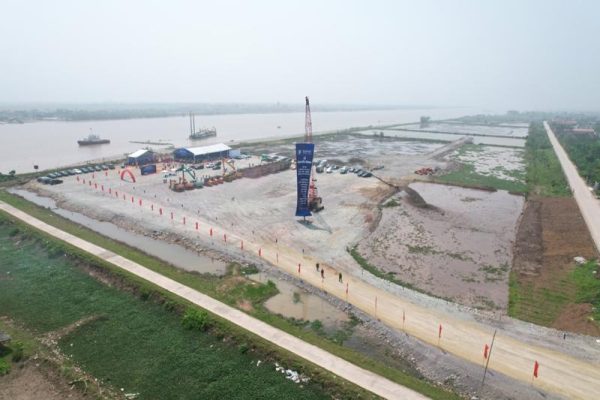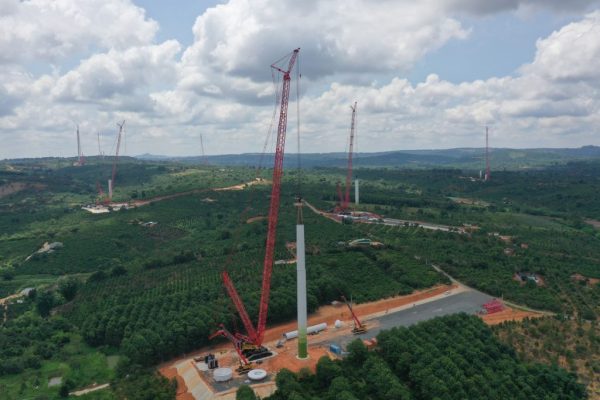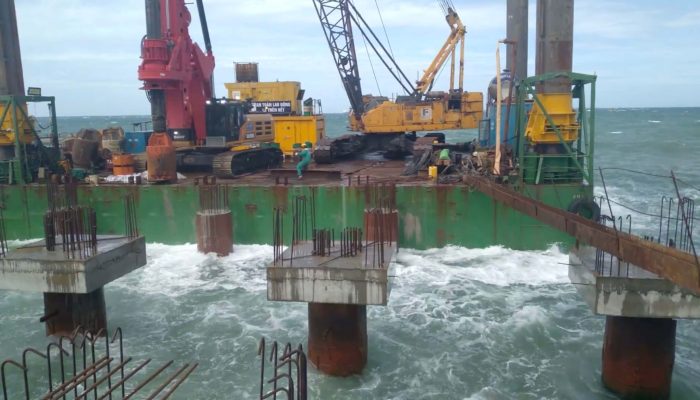On September 7, Typhoon Yagi, with wind speeds reaching levels 12-14 when it hit the Quang Ninh – Hai Phong area, brought heavy rainfall across northern Vietnam after the storm. It caused 344 deaths and missing persons, numerous landslides, and severe flooding, significantly affecting social life. Typhoon Yagi also caused serious damage to construction projects, particularly in coastal areas and regions with important infrastructure projects.
In Vietnam, typhoons and the damage they cause are an annual occurrence. To ensure the best quality for construction projects, it is advisable to limit construction activities during the rainy season. However, to meet deadlines, contractors sometimes still need to proceed with their work and therefore require effective solutions. Proper preparation and contingency plans to deal with storms are essential to minimize negative impacts.
As a company with nearly 20 years of experience in foundation construction and having completed numerous projects in areas with weak terrain, prone to landslides, near rivers, or coastal regions frequently affected by storms, Dua Fat Group understands that building port foundations during the stormy season is a major challenge. Bad weather can interrupt progress, damage materials, and increase the risk of labor accidents.
1. Detailed Planning
Monitor weather forecasts: Continuously update weather conditions to arrange and adjust work schedules accordingly.
Contingency planning: Prepare response plans for adverse weather conditions such as storms or heavy rains. It is important to have measures to shield the construction site and protect building materials.

2. Prepare Water-resistant Infrastructure
Drainage system: Design and build an effective temporary drainage system to prevent rainwater from flooding and affecting the foundation.
Soil stabilization: In cases where the soil is soft or easily eroded, it is necessary to reinforce the foundation using piles, stone gabions, or geotechnical layers.
3. Suitable Equipment and Materials
Use water-resistant machinery: Equipment like excavators and compactors should be protected from the effects of rain. Regular inspection and maintenance of machinery are essential.
Material preservation: Cover materials like cement, sand, and gravel to prevent them from being damaged by rain. Use sealed containers or temporary warehouses for storage.

4. Enhance Labor Safety
Safety training: Train workers on safety measures when working in bad weather conditions like storms. Provide adequate protective gear such as raincoats, helmets, and non-slip boots.
Regular site inspections: Closely monitor the construction site to ensure all safety measures are properly implemented. This is particularly important when working near deep water areas.
5. Utilize Technology
Apply erosion control technology: Use modern erosion control methods like geotechnical fabric coverage or chemical products to protect the foundation layers.
Implement advanced construction technologies: Use technologies such as underwater concrete pouring (fresh concrete) to ensure quality during stormy conditions.

6. Ensure Flexible Progress
Adjust work schedules: Arrange outdoor work for favorable weather days while focusing on indoor tasks or equipment preparation during rainy and stormy days.
By applying these measures, constructing port foundations during the stormy season can be safer and more efficient, reducing risks and ensuring project progress.


 VN
VN CN
CN KR
KR JP
JP